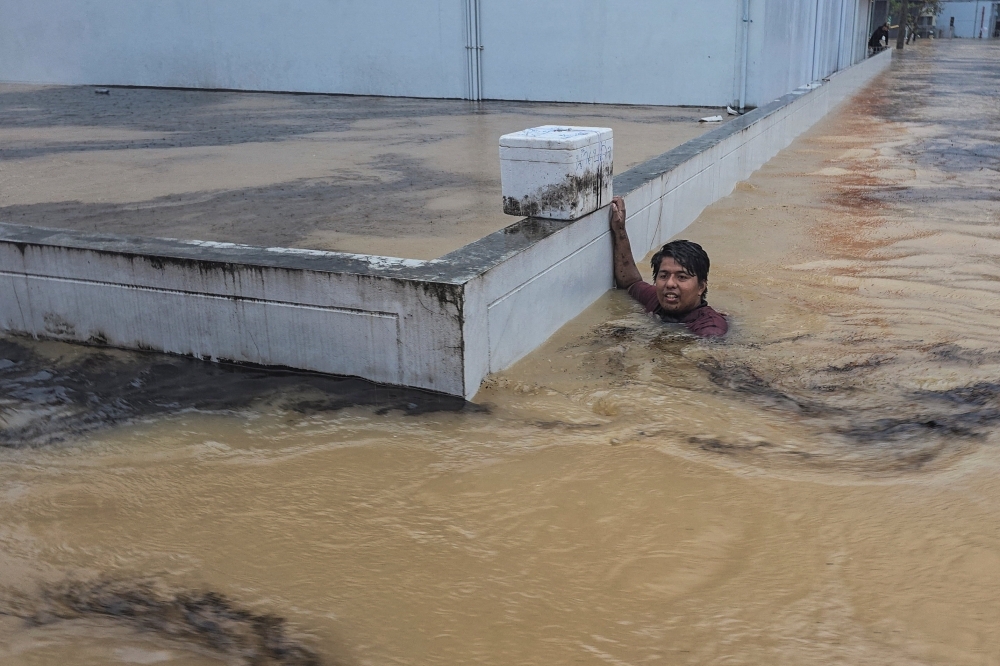Thailand is stepping into one of its most decisive humanitarian operations in recent years as relentless rainfall triggers the country’s worst flooding in more than a decade. With floodwaters reaching up to 2 metres in several regions, the government is preparing to deploy an aircraft carrier packed with relief supplies, medical personnel, field kitchens and emergency resources to the country’s battered south.
Thirteen lives have already been lost, with nine Thai provinces severely inundated. The flooding has also spilled across borders, affecting eight Malaysian states that were similarly devastated in last year’s monsoon season.
The Royal Thai Navy has confirmed that a fleet of 14 boats and the flagship carrier Chakri Naruebet are on standby, ready to move into the worst-hit areas. The carrier will function as a supply hub, an evacuation support base and even a floating hospital capable of treating large numbers of injured residents. Its onboard field kitchens can prepare up to 3,000 meals a day.
Authorities estimate that 1.9 million people have been affected nationwide, and weather officials warn that conditions could worsen, with more heavy rain and dangerous waves exceeding three metres.
Emergency helplines have been overwhelmed. Members of the Matchima Rescue Center in Hat Yai—one of the most devastated cities—say they have received thousands of calls in the past three days alone, ranging from evacuation requests to urgent pleas for food.
Hat Yai, Thailand’s fifth-largest city and a crucial hub for rubber trading, is now facing its worst flooding in 15 years. The city recorded an astonishing 335 mm of rainfall in a single day, the highest in its 300-year history.
Residents shared grim updates online.
One desperate post read: “We are five people and a small child without rice and water… phone reception has been cut — water is rising fast.”
Images broadcast by local media show streets transformed into rivers, vehicles submerged, and emergency crews navigating through fast-moving brown water. Rubber boats ferried stranded families to safety while others clung to makeshift flotation devices.
Across the border in Malaysia, more than 18,500 residents have been evacuated to over 120 relief centres, with Perlis and Kelantan among the worst-hit states. Malaysian Prime Minister Anwar Ibrahim urged citizens to prioritize safety and follow evacuation orders, assuring that rescue teams are on standby to support across affected regions.
The flooding poses a significant economic risk as well—Thailand’s vital rubber industry could see production fall by at least 10,300 tons, according to government estimates.
Social media has been flooded with cries for help from trapped families.
One user wrote: “Water is on the second floor now… we are six people, including two elderly. Pray. Please help.”
In moments like this, humanity becomes the strongest rescue force. While aircraft carriers and rescue boats deliver immediate aid, it is compassion, unity and collective responsibility that truly rebuild communities. Every shared message, every helping hand and every act of courage brings hope where the waters have taken so much.





